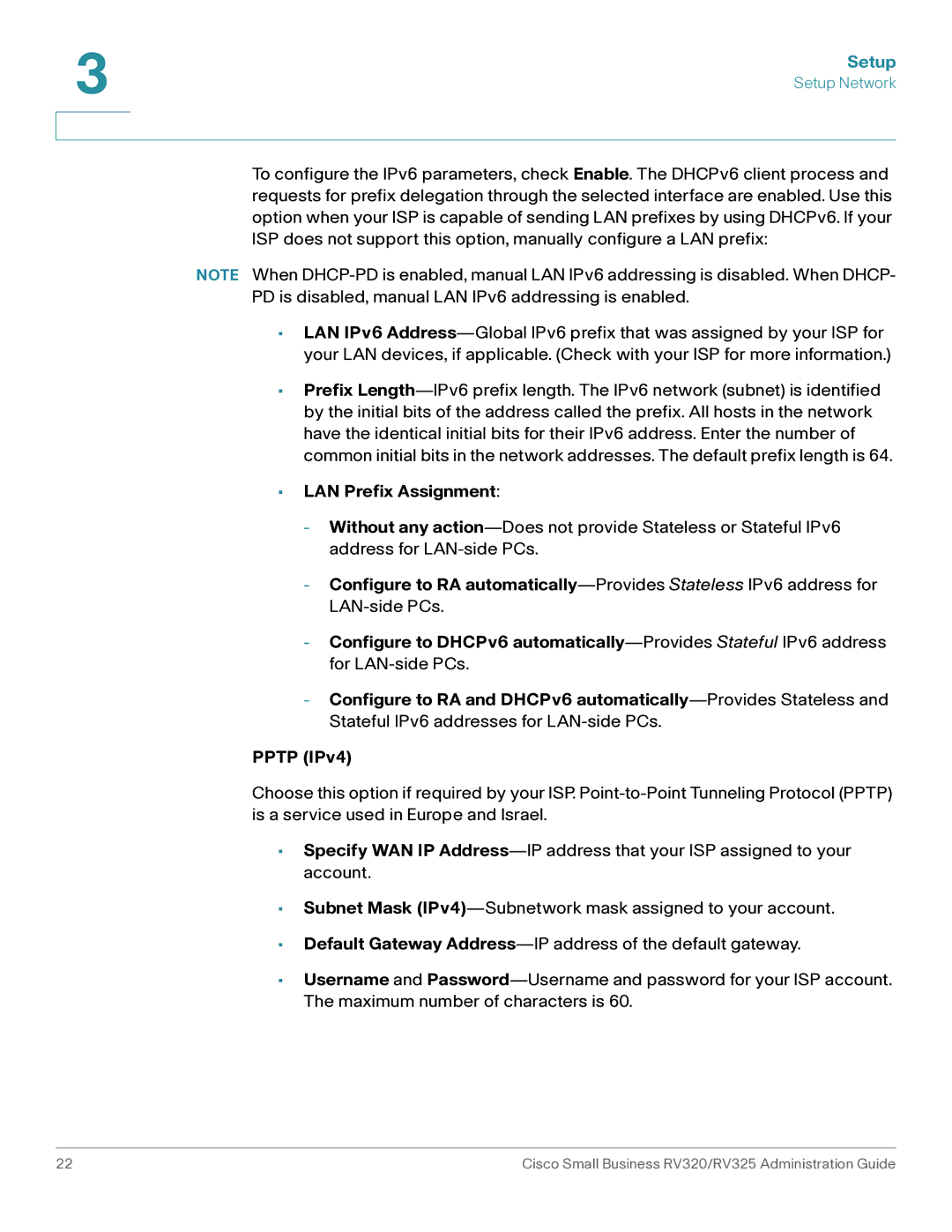To configure the IPv6 parameters, check Enable. The DHCPv6 client process and requests for prefix delegation through the selected interface are enabled. Use this option when your ISP is capable of sending LAN prefixes by using DHCPv6. If your ISP does not support this option, manually configure a LAN prefix:
NOTE When DHCP-PD is enabled, manual LAN IPv6 addressing is disabled. When DHCP- PD is disabled, manual LAN IPv6 addressing is enabled.
•LAN IPv6 Address—Global IPv6 prefix that was assigned by your ISP for your LAN devices, if applicable. (Check with your ISP for more information.)
•Prefix Length—IPv6 prefix length. The IPv6 network (subnet) is identified by the initial bits of the address called the prefix. All hosts in the network have the identical initial bits for their IPv6 address. Enter the number of common initial bits in the network addresses. The default prefix length is 64.
•LAN Prefix Assignment:
-Without any action—Does not provide Stateless or Stateful IPv6 address for LAN-side PCs.
-Configure to RA automatically—ProvidesStateless IPv6 address for LAN-side PCs.
-Configure to DHCPv6 automatically—ProvidesStateful IPv6 address for LAN-side PCs.
-Configure to RA and DHCPv6 automatically—Provides Stateless and Stateful IPv6 addresses for LAN-side PCs.
PPTP (IPv4)
Choose this option if required by your ISP. Point-to-Point Tunneling Protocol (PPTP) is a service used in Europe and Israel.
•Specify WAN IP Address—IP address that your ISP assigned to your account.
•Subnet Mask (IPv4)—Subnetwork mask assigned to your account.
•Default Gateway Address—IP address of the default gateway.
•Username and Password—Username and password for your ISP account. The maximum number of characters is 60.
